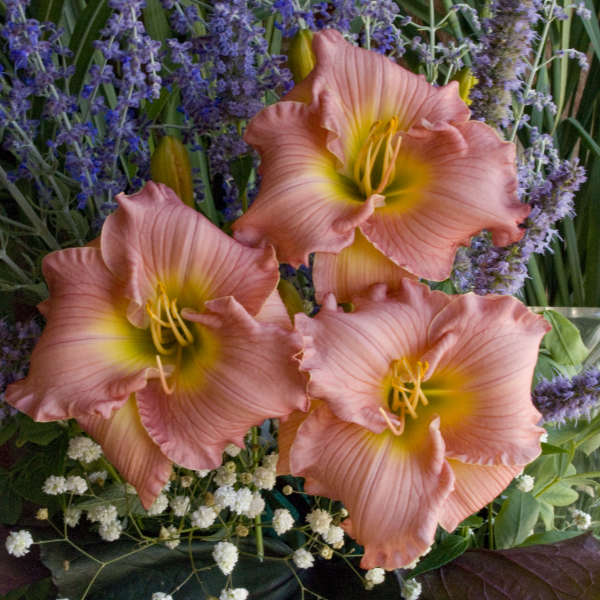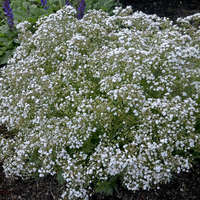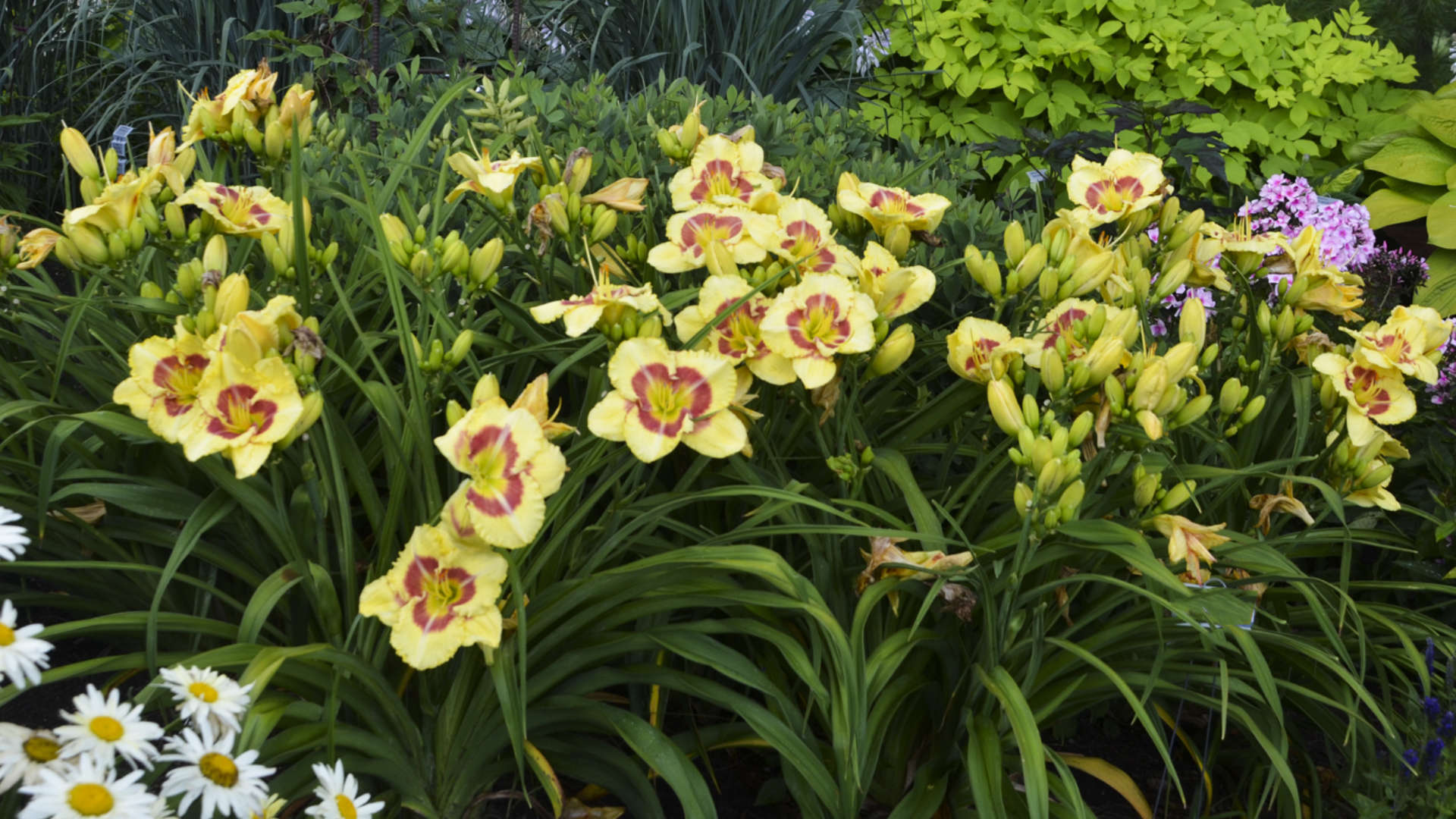Hemerocallis 'Pink Abundance'
Common Name: Daylily
Named for its exceptional bloom power, this daylily produces several flower scapes per fan and multiplies quickly in the landscape.
It’s a feminine beauty – pure rose pink flowers glimmering with diamond dust are edged in deep flowing ruffles. A sunny yellow watermark radiates out onto the petals just above the small, green throat.
Though this 5" daylily is not registered as fragrant, we did detect a slight sweet fragrance in our trials. Each flower remains open for at least 16 hours atop the willowy but strong, top branched scapes. It blooms first in midsummer and then again later in the season.
Dormant diploid.
Daylilies can survive many harsh conditions that other plants cannot including: polluted city environments, slopes, poor and dry soils, near pavement that is salted in winter, and under Black Walnut trees (not affected by juglone).


